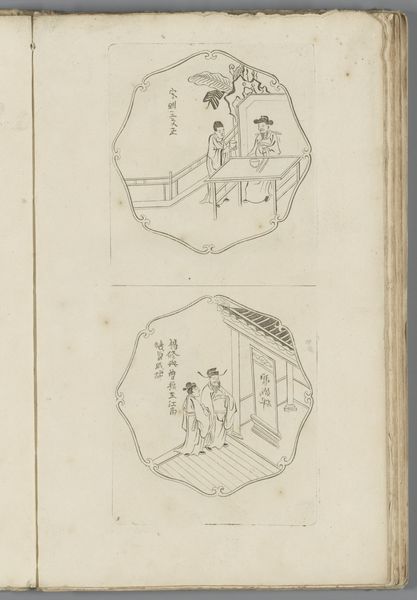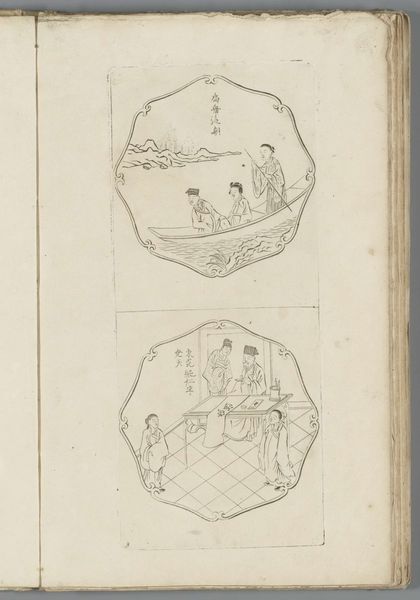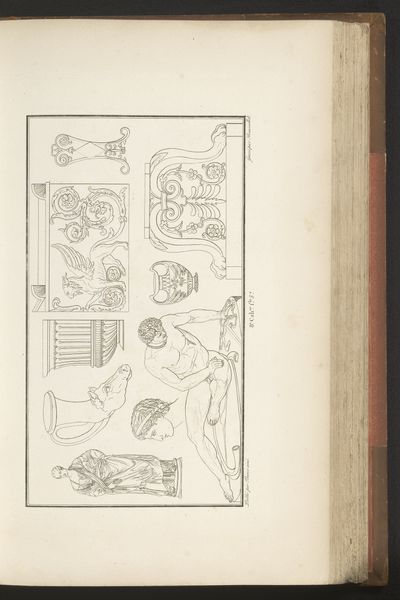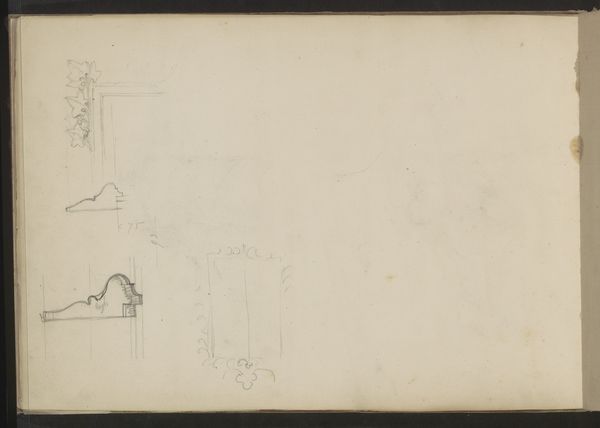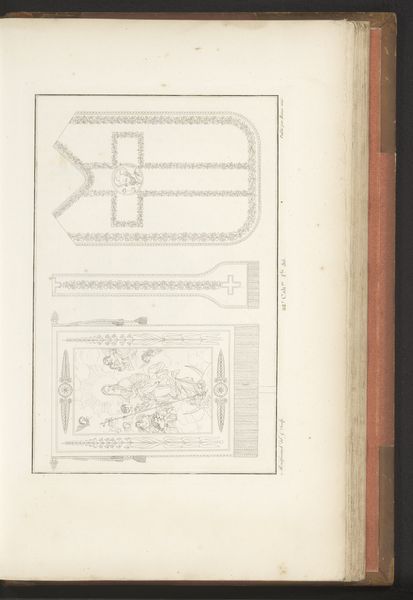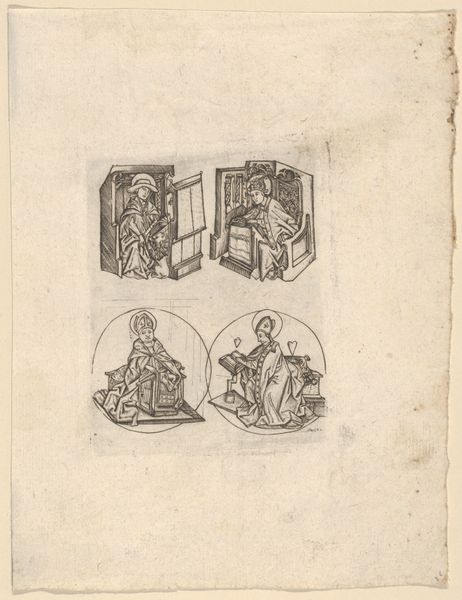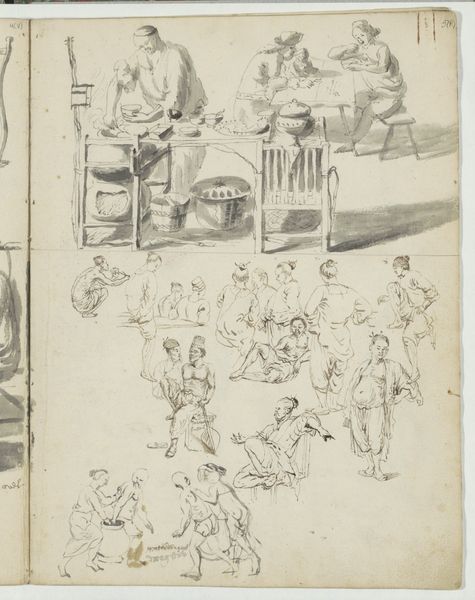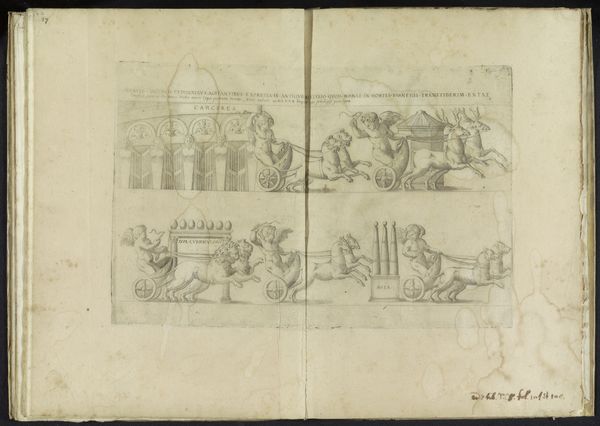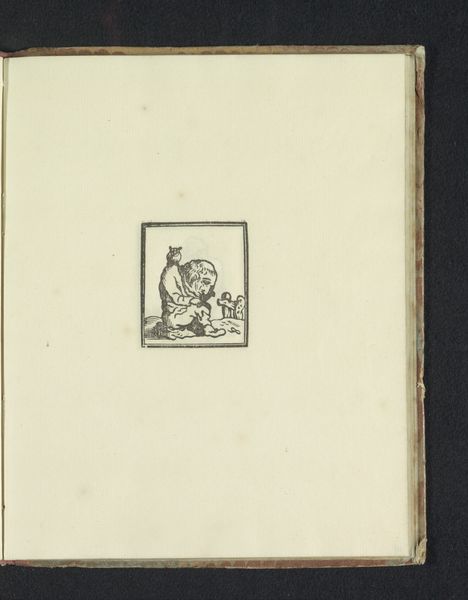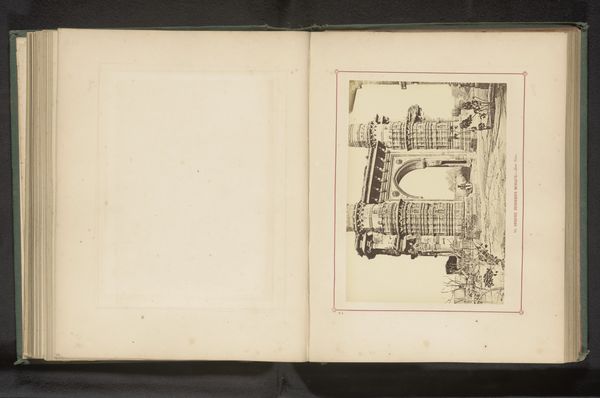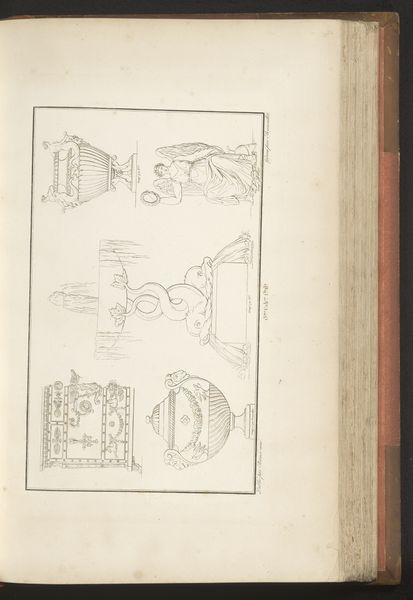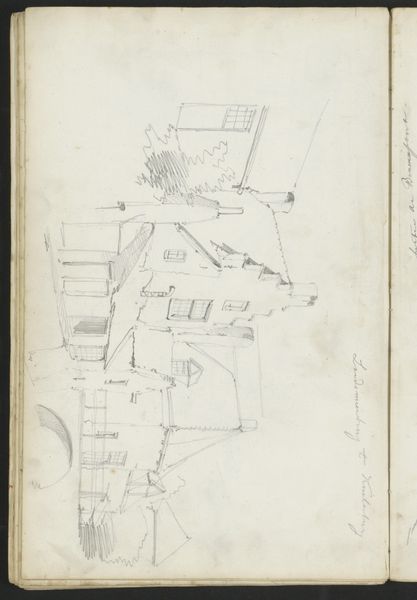
Wang Chi van de vroege Han-tijd wiens meerderjarigheidsnaam Tzu-yang luidt / Koning Chuang van Ch'u met zijn ministers bij een nachtfestijn 1702
0:00
0:00
drawing, paper, ink
#
portrait
#
drawing
#
narrative-art
#
asian-art
#
paper
#
ink
Dimensions: height 271 mm, width 115 mm
Copyright: Rijks Museum: Open Domain
Curator: This page, created in 1702 by Pieter Schenk, features two ink drawings on paper, housed here at the Rijksmuseum. It's labeled "Wang Chi van de vroege Han-tijd..." and "Koning Chuang van Ch'u..." Editor: They’re both rendered in the same spare style. I’m interested in the use of ink, which seems to emphasize the figures and the narrative above all else. What stands out to you, looking at these drawings? Curator: I'm drawn to the relationship between the artist, the materials, and the potential market for these images. Schenk, a European artist, is appropriating, or perhaps translating, an Asian artistic style using European methods of production. Think about the type of paper used and where the ink may have been sourced. Editor: So, you’re saying the *making* of this image involves cross-cultural exchange in resources, not just in the subject matter depicted. How might this kind of material production affect our understanding? Curator: Precisely. It pushes us to consider the conditions under which this work was produced. Where was this paper sourced? How readily available would that ink have been to Schenk? Who would have purchased such a piece and why? Considering these questions challenges us to look beyond just aesthetics. What is the labour involved? The economic relationship at play? Editor: I hadn't thought of it that way. Thinking about the supply chain gives us insights into the cultural exchange involved. Curator: Indeed. We see it’s not simply imitation but an engagement with specific materials and the resources and markets that enabled its creation. How do those production elements shift our understanding? Editor: So, paying attention to the materiality and production reveals these complex interactions across cultures, making us think beyond surface appearances. It highlights labor, access, and ultimately, a globalized early 18th century! Thanks for this different lens! Curator: My pleasure. Hopefully, by recognizing that material underpins meaning, the next time you are in front of a piece you will consider asking yourself about what it is made of, by whom and why.
Comments
No comments
Be the first to comment and join the conversation on the ultimate creative platform.
